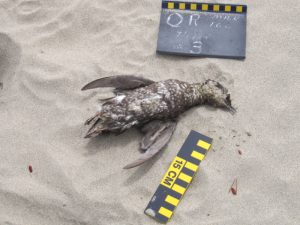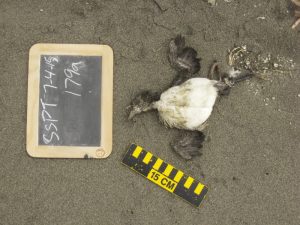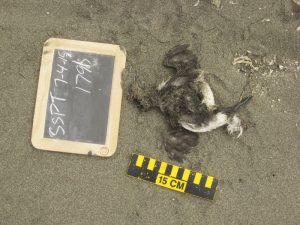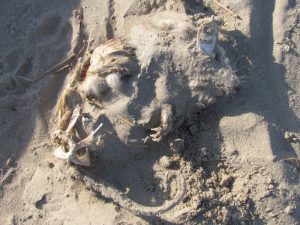Hi COASSTers,
Hope you’re all having a great month and enjoying some beautiful weather on the beach lately. It’s been a busy month here at COASST. We have a fantastic new team of summer interns (see photos and bios at the bottom of this page), and we’re gearing up for a series of trainings in the San Juan Islands (WA) this weekend. WA COASSTers, we’d love it if you could join us – see our events calendar for details!
Thank you for all of the datasheets and photos over the past few weeks – we really appreciate it! As you head out for your next survey, take a quick look at your supplies – we’ll be starting summer volunteer check-ins soon and would be happy to replenish your inventory of cable ties, datasheets, etc.
Also, as some of you have heard, Jane Dolliver (COASST’s Beached Bird Program Coordinator) is leaping into graduate school in the Department of Fisheries and Wildlife at Oregon State University this fall. She’ll be working on project involving seabirds (what else?!) and Alaska’s Groundfish fishery. We’ve been lucky to have Jane as part of the COASST team for the last 13 years – she started as an undergraduate intern with COASST in 2002 – and wish her well on this next step!
Let’s take a look at what’s washed in recently:
Oregon Mile 166 (OR) 7/1/15 found by Priscilla and Walter
Bill: 15 mm
Wing: 13 cm
Tarsus: 18 mm
Alaska Foot Key – page 34
West Coast Foot Key – page 22
Choose webbed (go to Q2), choose completely webbed (go to Q3), choose 3 toes: all webbed (go to Q4), choose tarsus <50mm – ALCIDS.
West Coast Guide
On AL1, select wing chord < 15cm, Small Alcids. Select bill color dark: Common Murre juvenile (AL4), Marbled Murrelet (AL14). The MAMUs measurements match, check COMUj – nope, plain white belly. Double check similar species: no white underwing linings (not ANMU), no spot on bill (not CAAU) – so it’s a Marbled Murrelet, an adult in breeding plumage.
Alaska Guide
On AL1, select wing chord < 15cm, Small Alcids. Select bill color dark: Marbled Murrelet (AL17), Kittlitz’s Murrelet (AL19). Based on measurements, could be either of these species – but the secondary feathers are all dark – not a KIMU. Check similar species: no white underwing linings (not COMU), bill is dark and underwing linings are not white (not ANMU), bill in range and underwing simply dark (not CAAU). It’s a Marbled Murrelet, an adult in breeding plumage.
——————————————————————————————————————————-
South Spit (CA) 07/04/15 found by Grace and Don
Bill: not measurable, no upper bill
Wing: 5.5 cm
Tarsus: 32 mm
Alaska Foot Key – page 34
West Coast Foot Key – page 22
Choose webbed (go to Q2), choose completely webbed (go to Q3), choose 3 toes: all webbed (go to Q4), choose tarsus <50mm – ALCIDS.
West Coast Guide
On AL1, select wing chord < 15cm, Small Alcids. Select bill color dark: Common Murre juvenile (AL4), Marbled Murrelet (AL14). The Marbled Murrelet’s tarsus and wing chord are too small – check COMUj. Looks like the photo of the young juvenile, but confirm against similar species: white throat (not CAAU), no white upperwing patch (not PIGU), no white scapulars (not MAMU) – so it must be a Common Murre juvenile.
Alaska Guide
On AL1, select wing chord < 15cm, Small Alcids. Select dark bill: Marbled Murrelet (AL17) or Kittlitz’s Murrelet (AL19). Whoa! Tarsus is way too long and wing is way too short for either of these species! Consult the similar species section: murres (AL3, AL5), Ancient Murrelet (AL15), Cassin’s Auklet (AL21). Hmm. The measurements are not fitting any of these species, either. Check for immatures – Thick-billed Murre, Common Murre. Tiny wing and tarsus almost adult-sized (like puppies, they grow into their feet first!). This is a Common Murre chick – white face and throat.
——————————————————————————————————————————-
This Russian vodka bottle was found by COASST interns during a field trip to Ocean Shores. As explained by translating volunteer Sarah, the brand is Кристалл/Kristal which was founded in 1901.This particular vodka bottle is not currently in production by the company. The words at the top mean “Moscow plant,” so this bottle was processed in their Moscow factory. We hear it’s high quality vodka.
——————————————————————————————————————————-


While combing the Long Beach peninsula (WA) on July 3rd, Russ found this object. We have no clue what it is–but hope one of you do! Any ideas? Please send them to COASST!
——————————————————————————————————————————-
Check out this cool find! John, Tara, and Cassidy found this Virginia opossum in May during a survey of Bayshore Beach (OR). You can tell it is an opossum due to its long, rat-like tail and sharp claws. Not only do their prehensile tails grasp objects, but their claws help them climb trees. Opossums can be found living in tree holes that have been dug out by other animals. They are most commonly known for their signature phrase “playing possum,” where they involuntarily fall to the ground and play dead, when they sense that they are in danger. This catatonic state is commonly accompanied by a foul odor and foaming at the mouth, where they have the chance to show off all 50 of their teeth!
Seen something on the beach you’ve always wondered about? Send us a photo!
Cheers,
Erika, Julia, Jane, Hillary, Charlie, Heidi, Jenn, and the COASST Interns






